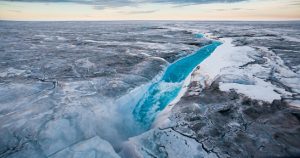
Recent Images From NASA Reveals That Rivers And Lakes Have Ice Deep Inside
With an untiring beauty and wonders within, there’s no way to conclude that we are well aware of our planet’s details. Despite the unparallel progress and the availability of fore-running technology, we discovered many interesting things from the advent of International Space Agency NASA.
Followed by the astounding images of Saturn’s rings, NASA has now released a stunning image of ice covering the Amundsen Gulf, Great Bear Lake, and numerous small lakes in the northern reaches of Canada’s Northwest Territories and Nunavut.
This image now came public was captured using the very modern device- Moderate Resolution Imaging Spectroradiometer (MODIS) onboard NASA’s Terra satellite on On May 29, 2017.
As it is known till now, Sea ice generally forms in the Gulf of Amundsen in December or January and breaks up in June or July. Now post the discoveries, it is added that Lake and river ice in this area follow roughly the same pattern, though shallow lakes freeze up earlier in the fall and melt earlier in the spring than larger, deeper lakes, says the official sources from the agency.
On the whole, these Icy lakes and rivers make a significant footprint on the Arctic landscape, while also affecting the people who live there.
As lakes and rivers have the highest evaporation rate of any surface in high latitudes, understanding and monitoring seasonal ice cover is critical to accurately forecasting the weather and understanding regional climate processes respectively.